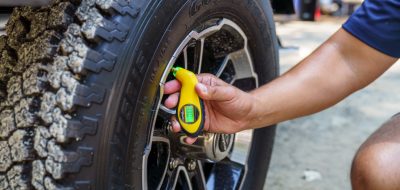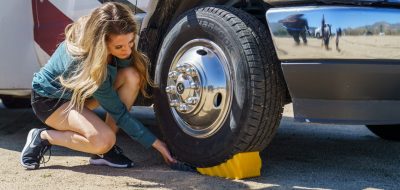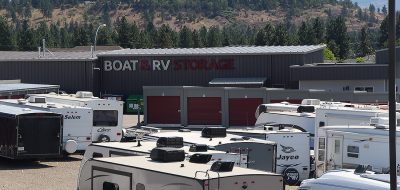We’re facing a lot of travel restrictions these days, but that doesn’t mean we should neglect our RVs. Many of us have only recently taken our RV out of winter storage, and even though some of our travel plans have been curtailed, we should still pay attention to the little details — like RV tire care — that keep us prepared for future trips.
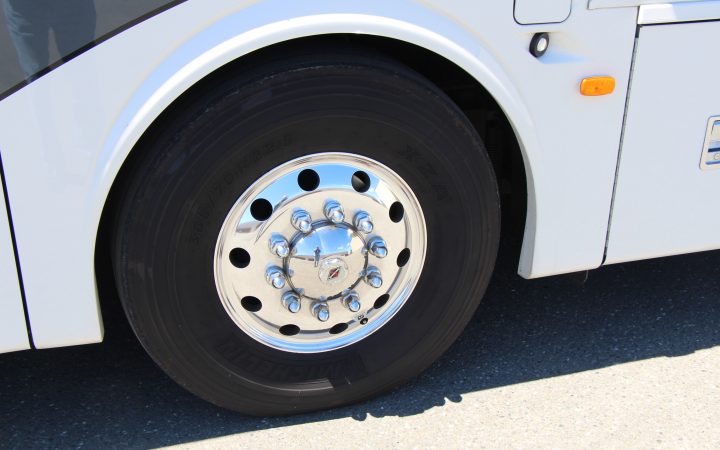
RV Tires
TLC for Your Tires
The tires that your RV rides on require special preparation and care. Unlike automobiles, which are used on an ongoing basis throughout the year, your RV tires often sit idle for the long winter storage periods. Low annual travel mileage and off-season layup often result in minimal tire tread wear — so much so that most RV tires age out, not wear out.
Most automobiles wear their tire treads out long before aging is a consideration. But how long do RV tires last before they “age out?” There is no correct answer here, as much is dependant on how well they are cared for. While the maximum recommended life of an RV tire is 10 years, the majority will not make it that long. Age-related deterioration and damage usually cause the need for much earlier replacement.
For many RV owners, maintaining the correct tire pressure, and perhaps covering them from the sun, is the key to keeping them in top condition. But the fact is, much of the age deterioration of these tires occurs during periods of prolonged idleness. Not adhering to proper preparation to protect your RV’s tires during storage can drastically shorten their life. Equally important is properly preparing them for the season.
Cleaning and Protecting
Cleaning the tires thoroughly cannot be understated. Dirt and debris can leach embedded oils and chemicals from the tire over a relatively short period of time. Apply a quality tire protector product to slow the process of aging and wear-and-tear.

In addition to the aging during the seasonal storage, the lack of use of these tires stops the flexing of the casing. This flexing promotes the “blooming” that brings out the chemical enhancements that also help in protecting them from the harsh environmental conditions.
RV owners should know the age of their current tires. If not, check and record this information. Look for the “DOT” embossing on the sidewall near the bead (the edge of the tire that sits on the wheel.) It will read something like this: DOT XX XX X XX X 0217 (Focus only on the last four digits, which indicate the week number and the year. For example, “Week 02 of ‘17”, January 2017). Note the age and monitor the wear that comes from aging.
Don’t forget your spare tire if you have one. These, too, deteriorate over time, even if they never actually are employed.

Be sure to conduct a thorough visual inspection of each tire prior to starting a new season. If you find sidewall cracks, the general rule of thumb is a cut depth of 1/32-inches is probably okay but should be monitored. At 2/32-inches, have your tire dealer inspect it. A depth of 3/32-inches means that your tire requires replacement.
Well, that is some thoughts of how you can attempt to get the most out of your RV tires. Remember, your tires are the only thing between your rig and the road. Taking care of them not only can reduce your costs, but also adds to your safe travel.
Monitoring the Pressure
Looking for RV tire protection that you can implement today for future use? Well, there are very few RV products that provide both an increase in safety and a reduction in operating costs. However, a tire pressure monitoring system can do precisely that.
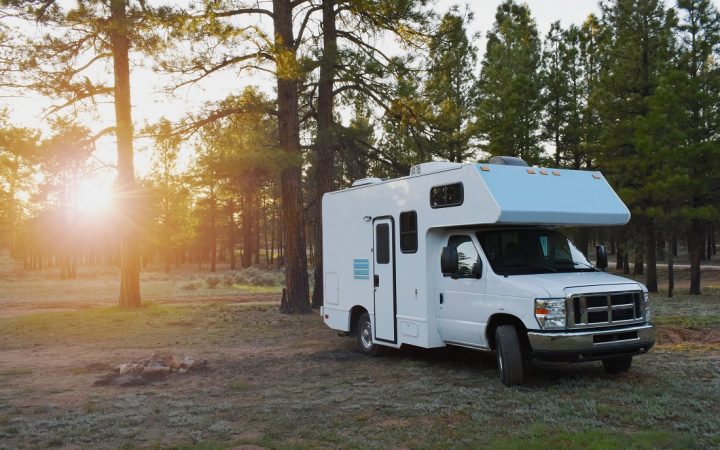
An early warning of a loss in tire air pressure can prevent a rapid deflation or blow out. Such failures, while at highway speeds, can be very dangerous. Additionally, a deflated tire carcass often causes collateral body damage during rotation before stopping.
Excessive tire wear occurs if the air pressure is below or above the required specification. Tire air pressure will never maintain constant pressure as it reduces slowly over time. Additionally, seasonal temperature changes, as well as changes in elevation, also skews the pressure. Therefore, a regular monitoring of the pressure is needed. Keeping the tires at the right spec will not only save on tire wear, but will also reduce rolling resistance which in turn can help increase fuel mileage.
Tire pressure monitor systems are not only a terrific gift but also a great option to add to any RV. They are capable of watching over all your tires, even a vehicle being towed behind. The wireless sensors are easily fastened to the tire stems. The entire installation can be a D.I.Y. or can be installed at your local Camping World Service Store.
There are a host of models to fit your budget. Some have additional features, but all will do the job. Pick out the one that’s right for you.
Peter Mercer — Where The Rubber Hits The Road





